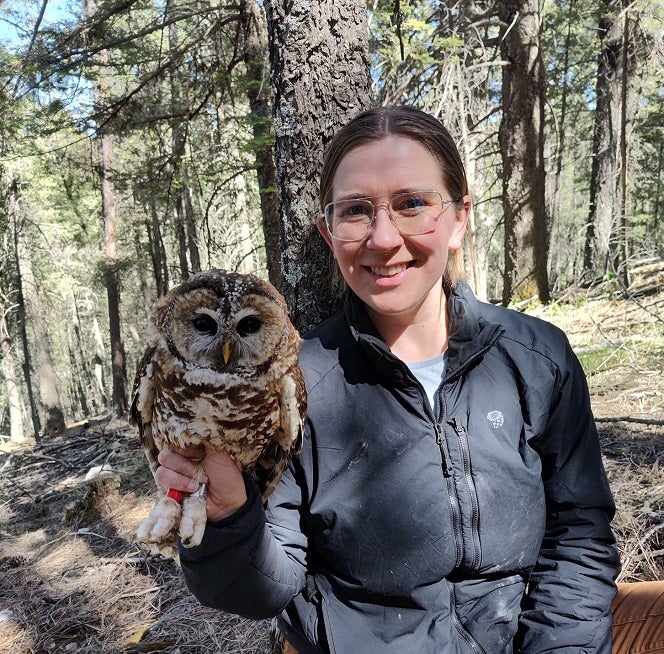
Boise State University MS Raptor Biology student Michaela Gustafson defended her thesis, “Mapping Distribution and Densities of Ptarmigan and Arctic Ground Squirrels within Gyrfalcon Breeding Territories in Western Alaska” on the morning of October 13, 2023. Gustafson’s main advisor is Dr. Jen Cruz (Boise State University Raptor Research Center, Biological Sciences), and her committee includes Dr. Travis Booms (MS, Raptor Biology, ’02) of Alaska Department of Fish and Game and Dr. Jesse Barber (Biological Sciences).
ABSTRACT
The Arctic, a region characterized by its extreme environmental conditions, is undergoing rapid habitat loss due to accelerated climate warming. These transformations are posing significant threats to its wildlife including prey supporting Arctic raptor species like Gyrfalcons. This study evaluated the distribution, abundance, and habitat associations of three key prey of Gyrfalcons: Willow Ptarmigan, Rock Ptarmigan, and Arctic ground squirrels across the Seward Peninsula, Alaska, in 2019, 2021, and 2022. Willow Ptarmigan abundance was higher in areas with more shrub cover while Rock Ptarmigan and Arctic ground squirrels were more abundant in areas with more sparse vegetation. The three species were most common on the more isolated northern parts of the peninsula. Rock Ptarmigan, in particular, had the most patchy distribution while Willow Ptarmigan were more common throughout the study area. As shrubs continue to encroach on sparse vegetation and open tundra, Rock Ptarmigans and Arctic ground squirrels may be at most peril, while Willow Ptarmigan may benefit from ongoing increases in shrub cover. This knowledge is a vital first step for informing conservation efforts in a rapidly changing Arctic landscape, with implications for the survival of Gyrfalcons and the broader Arctic trophic network.